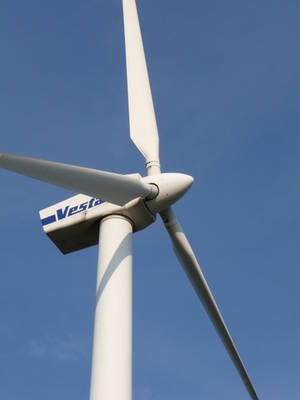Wind turbines play a key role in tackling climate change, but now it seems they may also be able to mitigate hurricanes. 
Wind speeds recorded downwind of wind farms are lower, as the spinning turbines have taken energy out of the passing wind. Scientists are looking at how this could affect storms.
Publishing in the journal Nature Climate Change, researchers based at the University of Delaware and at Stanford University, explain that if a large array of wind turbines were put in the right place, it could reduce hurricane wind speeds by up to 92 miles per hour and reduce storm surge, which is a key cause of flooding, by up to 79 per cent.
The team used information from previous hurricanes, including Katrina, which killed over 1800 people in 2005, and the more recent Sandy of 2012, which caused approximately US$82 billion of damage, to build a computer model of the storms.
They could then calculate what would have happened had there been an off-shore wind farm in the path of the storm.
In the case of a hurricane, the middle or 'eye' of the storm has the strongest wind speeds, about 50 metres per second (m/s), whereas in the outer edges of the hurricane the wind speeds are only about 20m/s.
As the storm comes in from the ocean, the outer edges are the first to hit the turbines. At these wind speeds, the turbines are still able to spin and convert the wind energy into electricity.
This reduces the wind speed, with the knock-on effect of de-powering the whole storm and cutting down the potential of the hurricane to do damage to coastal areas.
The researchers performed numerous simulations, varying the number of wind turbines in the farm, with hundreds of thousands to tens of thousands required to achieve the effect. But are wind farms of this size feasible?
According to study co-author Dr Cristina Archer, from the University of Delaware, "tens of thousands [of turbines] could be a realistic scenario, it would obviously take a long time and it would require commitment".
Focusing on smaller scale wind farms, Archer points out that even "with one tenth of the turbines you would think you only get one tenth of the benefit but you don't, you actually get more than sixty per cent of the benefit ... with a smaller number of turbines than we used in the study, we are confident there are still benefits".
Archer added "anything with a relatively large structure and has high winds would be impacted the same as the hurricane". Therefore wind farms could provide storm protection for many more areas.
These farms would provide the most cost-effective storm protection to nearby coastal areas compared with other strategies, such as sea walls, as they may effectively pay for themselves through the electricity generated.
How wind farms tame hurricanes
- Previous Northern Lights
- Next Brain-training boosts ball skills










Comments
Add a comment